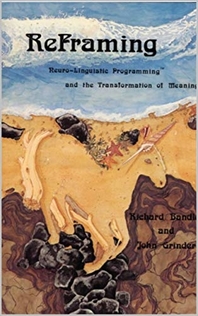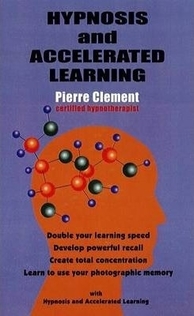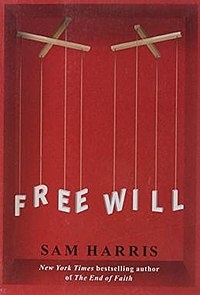
Scott Adams Persuasion Reading List - 26 Recommended Books
Scott Adams
Scott Adams Persuasion Reading List - a famous list of books selected by Scott Adams personally in order to develop persuasion skills and confidence.
Scott Adams believes that confidence and persuasion should have a complex approach to it.
You need to develop multiple skills like eloquence, effectiveness, selling skills, and even advertisement in order to become truly persuasive and independent.
Scott Adams Persuasion Reading list is useful for anyone who wants to strengthen their personality and communication skills to reach their personal and business goals.
Scott Adams has two versions of this list and we incorporated all the best books on persuasion into this list.
Check out Scott Adams Persuasion Reading list - 26 recommended books!
See all
0
likes

Awaken the Giant Within
The author offers advice on such matters as mastering emotions, overcoming debilitating habits such as over-eating, drinking and drug abuse, unleashing the hidden power of body and mind, improving personal and professional relationships, and taking control of personal finances.
See all
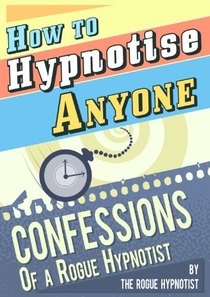
How to Hypnotise Anyone
The number 1 Amazon kindle bestseller on hypnosis is now available in paperback! Finally the hidden secrets of hypnosis unveiled! Did you know that the likelihood is at some point today you have been hypnotised!? Did you ever watch those magician's secrets shows? At last a book that gives away all the secrets of hypnosis! And most hypnotists don't know them! You will learn how to hypnotise like a professional! This is a book that will give you THE hypnosis scripts copyright free to keep and use for fun, stage hypnosis or therapy! If you have a voice you can hypnotise someone with words alone! A 100% fail proof method! Who is the Rogue Hypnotist? The Rogue Hypnotist is a top UK hypnotherapist and NLP Master Practitioner working in London, England. He has helped multimillionaires, heads of advertising agencies, top chefs, top racing car drivers, psychotherapists and councillors, law firm associates, film studio owners, Sky TV presenters, journalists, nurses, commodity traders, stock brokers, architects, teachers, sports organisation presidents, waiters, painters and decorators, 16-90 years olds from all over the world. He has an amazing success rate and can help clients in just 1, 1 hour session 99.9% of the time. He wants you to be able to do the same! Novice and expert will benefit from the 'hypno-tricks' within! He remains anonymous for his own reasons... 'How to hypnotise anyone' is a practical 'how to' book that will reveal to you: 1. What hypnosis really is. 2. What trance really is. 3. What the subconscious really is and how to speak to it. 4. What the basic principles of successful hypnotic inductions really are. 5. 2 quick and fun deepeners that will send people through the floor! 6. How to really get genuine rapport so people trust you. 7. Learn the true language of hypnosis. 8. How to have a great hypnotic voice. 9. How to be authoritative without being arrogant. 10. What the 'moment of hypnotic surrender' is. 11. What embedded commands to use and how to deliver them. 12. Learn how to spot the signs of hypnosis that others hypnosis 'experts' don't teach. 13. Learn the 'Pleasure Deepener' - the best hypnotic convincer there is. 14. Learn how the media, TV and politicians use hypnotic principles on YOU! 15. NLP and hypnosis myths will be trashed! Why you need this book. The facts that the so-called 'elite' self-help gurus don't want you to know are in this book! Knowledge is power! This engaging book will teach you exactly how to hypnotise anyone even if you've never done it before! Guaranteed! Unlike the self-help establishment the Rogue Hypnotist is not asking you to pay thousands of pounds or attend boring 4 week lectures to learn the essential skills of hypnosis. He is virtually giving away his secrets for free! It's time the truth was known! Your hypnosis confidence is just a click away!
See all
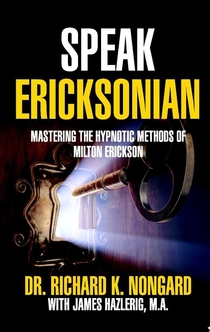
Speak Ericksonian
You are holding in your hands the keys to Ericksonian approaches to hypnotherapy, they unlock how to apply the solution oriented strategies of Milton Erickson, M.D. to a modern application of his ideas. This book will teach you how to tap into the treasure trove of resources Milton Erickson left us through his writings, case studies, and books. The book provides scripts, resources, and a clear understanding of what Ericksonian hypnotherapy is all about. You will learn the language patterns that create the foundation for conversational hypnosis, indirect suggestion, and the creation of sensorial experiences. After you read this book and complete the exercises, you will be able to speak Ericksonian fluently. This book is a practical guide and an instructional manual that will lead you into success.
See all
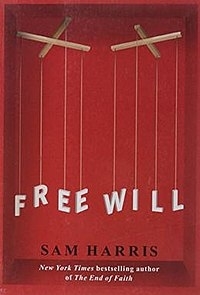
Free Will
A BELIEF IN FREE WILL touches nearly everything that human beings value. It is difficult to think about law, politics, religion, public policy, intimate relationships, morality—as well as feelings of remorse or personal achievement—without first imagining that every person is the true source of his or her thoughts and actions. And yet the facts tell us that free will is an illusion. In this enlightening book, Sam Harris argues that this truth about the human mind does not undermine morality or diminish the importance of social and political freedom, but it can and should change the way we think about some of the most important questions in life.
See all

Illusions
In the cloud-washed airspace between the cornfields of Illinois and blue infinity, a man puts his faith in the propeller of his biplane. For disillusioned writer and itinerant barnstormer Richard Bach, belief is as real as a full tank of gas and sparks firing in the cylinders ... until he meets Donald Shimoda - former mechanic and self-described messiah who can make wrenches fly and Richard's imagination soar...In Illusions, the unforgettable follow-up to his phenomenal New York Times bestseller Jonathan Livingston Seagull, Richard Bach takes to the air to discover the ageless truths that give our souls wings: that people don't need airplanes to soar ... that even the darkest clouds have meaning once we lift ourselves above them ... and that messiahs can be found in the unlikeliest places - like hay fields, one-traffic-light midwestern towns, and most of all, deep within ourselves.
See all
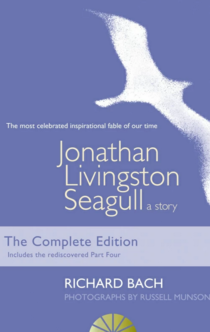
Jonathan Livingston Seagull
The new complete edition of a timeless classic that includes the never-before-published Part Four and Last Words by Richard Bach.This is the story for people who follow their hearts and make their own rules…people who get special pleasure out of doing something well, even if only for themselves…people who know there’s more to this living than meets the eye: they’ll be right there with Jonathan, flying higher and faster than they ever dreamed.A pioneering work that wed graphics with words, Jonathan Livingston Seagull now enjoys a whole new life.
See all
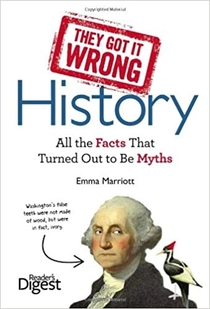
They Got It Wrong: History
They Got It Wrong: History exposes historical fallacies around the globe from the Roman Empire to World War II. There are countless twisted, sanitized tales that have become entrenched in popular belief but are really now more than warped reflections of the truth—or flat out lies. Author Emma Marriot shines a light on these murky corners of history to separate out the facts from shadowy fictions and illuminate how and why these falsehoods got passed around as truths.
See all
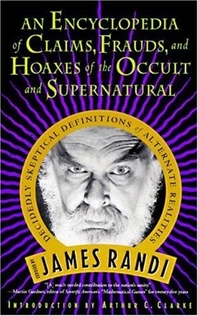
An Encyclopedia of Claims, Frauds, and Hoaxes of the Occult and Supernatural
This book is an extensive encyclopedia that defines and describes the people, events, theories, history, and truths of the paranormal -- prepared by the world's leading skeptic, iconoclast, and debunker, James Randi. Is the earth regularly visited by extraterrestrials with a serious penchant for examining the genital areas of unwilling human subjects? Is "spoon-bending" done through psychic powers? Do the sick regain their health at the hands of faith healers? Are Satanists sacrificing our children in the woods? With a few hard, factual definitions to work with, you can be better equipped to answer these questions which the media, now more than ever, bombards us with on a daily basis. Dealing with subjects that border on both science and mythology, Randi's Encyclopedia of Claims, Frauds, and Hoaxes of the Occult and Supernatural is a wide-ranging compendium, with entries from A to Z of hundreds of topics, many of which are frequently the subject of news stories, television documentaries, and best-selling books on the paranormal. Some of the items are handled or scrutinized in depth, others are more concisely defined. Cross-references are indicated and a comprehensive index provides the reader with a valuable road map to the occult. Until now, the reading public has been poorly served by previous similar catalogs, which, having often been compiled by undiscriminating and rather naive authors, can fail to give a complete and accurate picture of the subjects they seek to define. In this scrupulously researched work, which has been in preparation for over ten years, Randi reveals, with humor and dispassionate insight, the actual facts behind the ever-accelerating flight from reason, a troubling journey that has seized our generation. Recognized internationally for his tireless and successful investigations of psychic, supernatural, and "magical" claims, Randi gently prods the imagination and reasoning powers of his readers. With an introduction by Arthur C. Clarke, An Encyclopedia of Claims, Frauds, and Hoaxes is a major work by one of America's most original and fearless thinkers. - Jacket flap.
See all
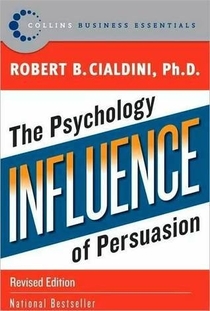
Influence
Influence: Science and Practice is an examination of the psychology of compliance (i.e. uncovering which factors cause a person to say "yes" to another's request) and is written in a narrative style combined with scholarly research. Cialdini combines evidence from experimental work with the techniques and strategies he gathered while working as a salesperson, fundraiser, advertiser, and other positions, inside organizations that commonly use compliance tactics to get us to say "yes." Widely used in graduate and undergraduate psychology and management classes, as well as sold to people operating successfully in the business world, the eagerly awaited revision of Influence reminds the reader of the power of persuasion. Cialdini organizes compliance techniques into six categories based on psychological principles that direct human behavior: reciprocation, consistency, social proof, liking, authority, and scarcity. New Reader's Reports are included in the Fourth Edition and illustrate how readers have used one of the principles or have had a principle of influence used on them.
See all

Trump: The Art of the Deal
______________________________THE NUMBER ONE BESTSELLER FROM THE 45th PRESIDENT OF THE UNITED STATES'I like thinking big. I always have. To me it's very simple: If you're going to be thinking anyway, you might as well think big.' – Donald J. TrumpHere is Trump in action – how he runs his business and how he runs his life – as he meets the people he needs to meet, chats with family and friends, clashes with enemies, and changes the face of the New York City skyline.But even a maverick plays by the rules, and Trump has formulated eleven guidelines for success. He isolates the common elements in his greatest deals; he shatters myths; he names names, spells out the zeros, and fully reveals the deal-maker's art. And throughout, Trump talks – really talks – about how he does it.Trump: The Art of the Deal is an unguarded look at the mind of a brilliant entrepreneur and an unprecedented education in the practice of deal-making. It's the most streetwise business book there is – and the ultimate read for anyone interested in making money and achieving success, and knowing the man behind the spotlight.
See all

What Every BODY is Saying
Joe Navarro, a former FBI counterintelligence officer and a recognized expert on nonverbal behavior, explains how to "speed-read" people: decode sentiments and behaviors, avoid hidden pitfalls, and look for deceptive behaviors. You'll also learn how your body language can influence what your boss, family, friends, and strangers think of you. Read this book and send your nonverbal intelligence soaring. You will discover:The ancient survival instincts that drive body languageWhy the face is the least likely place to gauge a person's true feelingsWhat thumbs, feet, and eyelids reveal about moods and motivesThe most powerful behaviors that reveal our confidence and true sentimentsSimple nonverbals that instantly establish trustSimple nonverbals that instantly communicate authorityFilled with examples from Navarro's professional experience, this definitive book offers a powerful new way to navigate your world.
See all

The Power of Habit
There's never been a better time to set new habits. This book will change your life.______________________________Why do we do develop habits? And how can we change them?We can always change. In The Power of Habit, award-winning New York Times business reporter Charles Duhigg translates cutting-edge behavioural science into practical self-improvement action, distilling advanced neuroscience into fascinating narratives of transformation.Why can some people and companies change overnight, and some stay stuck in their old ruts? The answer lies deep in the human brain, and The Power of Habits reveals the secret pressure points that can change a life. From Olympic swimmer Michael Phelps to Martin Luther King Jr., from the CEO of Starbucks to the locker rooms of the NFL, Duhigg explores the incredible results of keystone habits, and how they can make all the difference between billions and millions, failure and success – or even life and death. The Power of Habit makes an exhilarating case: the key to almost any door in life is instilling the right habit. From exercise to weight loss, childrearing to productivity, market disruption to social revolution, and above all success, the right habits can change everything. Habits aren't destiny. They’re science, one which can transform our businesses, our communities, and our lives.______________________________'Plenty of business books that try to tap into the scientific world manage to distil complicated research into readable prose. But few take the next step and become essential manuals for business and living. The Power of Habit is an exception.' ANDREW HILL, FINANCIAL TIMES
See all
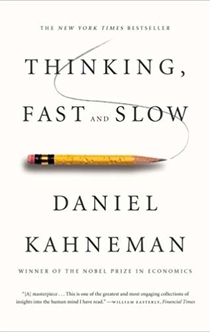
Thinking, Fast and Slow
Major New York Times bestsellerWinner of the National Academy of Sciences Best Book Award in 2012Selected by the New York Times Book Review as one of the ten best books of 2011A Globe and Mail Best Books of the Year 2011 TitleOne of The Economist's 2011 Books of the Year One of The Wall Street Journal's Best Nonfiction Books of the Year 20112013 Presidential Medal of Freedom RecipientKahneman's work with Amos Tversky is the subject of Michael Lewis's The Undoing Project: A Friendship That Changed Our MindsIn the international bestseller, Thinking, Fast and Slow, Daniel Kahneman, the renowned psychologist and winner of the Nobel Prize in Economics, takes us on a groundbreaking tour of the mind and explains the two systems that drive the way we think. System 1 is fast, intuitive, and emotional; System 2 is slower, more deliberative, and more logical. The impact of overconfidence on corporate strategies, the difficulties of predicting what will make us happy in the future, the profound effect of cognitive biases on everything from playing the stock market to planning our next vacation—each of these can be understood only by knowing how the two systems shape our judgments and decisions.Engaging the reader in a lively conversation about how we think, Kahneman reveals where we can and cannot trust our intuitions and how we can tap into the benefits of slow thinking. He offers practical and enlightening insights into how choices are made in both our business and our personal lives—and how we can use different techniques to guard against the mental glitches that often get us into trouble. Winner of the National Academy of Sciences Best Book Award and the Los Angeles Times Book Prize and selected by The New York Times Book Review as one of the ten best books of 2011, Thinking, Fast and Slow is destined to be a classic.
See all
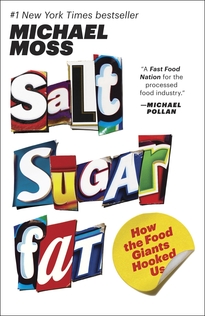
Salt, Sugar, Fat
#1 NEW YORK TIMES BESTSELLER From a Pulitzer Prize–winning investigative reporter at The New York Times comes the explosive story of the rise of the processed food industry and its link to the emerging obesity epidemic. Michael Moss reveals how companies use salt, sugar, and fat to addict us and, more important, how we can fight back. In the spring of 1999 the heads of the world’s largest processed food companies—from Coca-Cola to Nabisco—gathered at Pillsbury headquarters in Minneapolis for a secret meeting. On the agenda: the emerging epidemic of obesity, and what to do about it. Increasingly, the salt-, sugar-, and fat-laden foods these companies produced were being linked to obesity, and a concerned Kraft executive took the stage to issue a warning: There would be a day of reckoning unless changes were made. This executive then launched into a damning PowerPoint presentation—114 slides in all—making the case that processed food companies could not afford to sit by, idle, as children grew sick and class-action lawyers lurked. To deny the problem, he said, is to court disaster. When he was done, the most powerful person in the room—the CEO of General Mills—stood up to speak, clearly annoyed. And by the time he sat down, the meeting was over. Since that day, with the industry in pursuit of its win-at-all-costs strategy, the situation has only grown more dire. Every year, the average American eats thirty-three pounds of cheese (triple what we ate in 1970) and seventy pounds of sugar (about twenty-two teaspoons a day). We ingest 8,500 milligrams of salt a day, double the recommended amount, and almost none of that comes from the shakers on our table. It comes from processed food. It’s no wonder, then, that one in three adults, and one in five kids, is clinically obese. It’s no wonder that twenty-six million Americans have diabetes, the processed food industry in the U.S. accounts for $1 trillion a year in sales, and the total economic cost of this health crisis is approaching $300 billion a year. In Salt Sugar Fat, Pulitzer Prize–winning investigative reporter Michael Moss shows how we got here. Featuring examples from some of the most recognizable (and profitable) companies and brands of the last half century—including Kraft, Coca-Cola, Lunchables, Kellogg, Nestlé, Oreos, Cargill, Capri Sun, and many more—Moss’s explosive, empowering narrative is grounded in meticulous, often eye-opening research. Moss takes us inside the labs where food scientists use cutting-edge technology to calculate the “bliss point” of sugary beverages or enhance the “mouthfeel” of fat by manipulating its chemical structure. He unearths marketing campaigns designed—in a technique adapted from tobacco companies—to redirect concerns about the health risks of their products: Dial back on one ingredient, pump up the other two, and tout the new line as “fat-free” or “low-salt.” He talks to concerned executives who confess that they could never produce truly healthy alternatives to their products even if serious regulation became a reality. Simply put: The industry itself would cease to exist without salt, sugar, and fat. Just as millions of “heavy users”—as the companies refer to their most ardent customers—are addicted to this seductive trio, so too are the companies that peddle them. You will never look at a nutrition label the same way again. “As a feat of reporting and a public service, Salt Sugar Fat is a remarkable accomplishment.”—The New York Times Book Review
See all
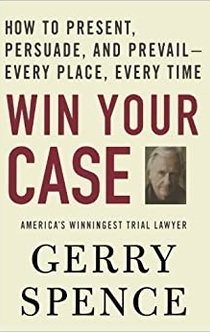
Win Your Case: How to Present, Persuade, and Prevail--Every Place, Every Time: Spence, Gerry
Gerry Spence is perhaps America's most renowned and successful trial lawyer, a man known for his deep convictions and his powerful courtroom presentations when he argues on behalf of ordinary people. Frequently pitted against teams of lawyers thrown against him by major corporate or government interests, he has never lost a criminal case and has not lost a civil jury trial since l969. In Win Your Case, Spence shares a lifetime of experience teaching you how to win in any arena-the courtroom, the boardroom, the sales call, the salary review, the town council meeting-every venue where a case is to be made against adversaries who oppose the justice you seek. Relying on the successful courtroom methods he has developed over more than half a century, Spence shows both lawyers and laypersons how you can win your cases as he takes you step by step through the elements of a trial-from jury selection, the opening statement, the presentation of witnesses, their cross-examinations, and finally to the closing argument itself. Spence teaches you how to prepare yourselves for these wars. Then he leads you through the new, cutting-edge methods he uses in discovering the story in which you form the evidence into a compelling narrative, discover the point of view of the decision maker, anticipate and answer the counterarguments, and finally conclude the case with a winning final argument. To make a winning presentation, you are taught to prepare the power-person (the jury, the judge, the boss, the customer, the board) to hear your case. You are shown that your emotions, and theirs, are the source of your winning. You learn the power of your own fear, of honesty and caring and, yes, of love. You are instructed on how to role-play through the use of the psychodramatic technique, to both discover and tell the story of the case, and, at last, to pull it all together into the winning final argument. Whether you are presenting your case to a judge, a jury, a boss, a committee, or a customer, Win Your Case is an indispensable guide to success in every walk of life, in and out of the courtroom.
See all

How To Win Friends and Influence People
You can go after the job you want—and get it! You can take the job you have—and improve it! You can take any situation—and make it work for you!Dale Carnegie’s rock-solid, time-tested advice has carried countless people up the ladder of success in their business and personal lives. One of the most groundbreaking and timeless bestsellers of all time, How to Win Friends & Influence People will teach you: -Six ways to make people like you -Twelve ways to win people to your way of thinking -Nine ways to change people without arousing resentment And much more! Achieve your maximum potential—a must-read for the twenty-first century with more than 15 million copies sold!
See all
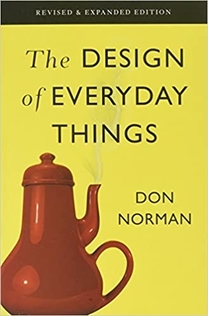
The Design of Everyday Things
Design doesn't have to complicated, which is why this guide to human-centered design shows that usability is just as important as aesthetics. Even the smartest among us can feel inept as we fail to figure out which light switch or oven burner to turn on, or whether to push, pull, or slide a door. The fault, argues this ingenious -- even liberating -- book, lies not in ourselves, but in product design that ignores the needs of users and the principles of cognitive psychology. The problems range from ambiguous and hidden controls to arbitrary relationships between controls and functions, coupled with a lack of feedback or other assistance and unreasonable demands on memorization.The Design of Everyday Things shows that good, usable design is possible. The rules are simple: make things visible, exploit natural relationships that couple function and control, and make intelligent use of constraints. The goal: guide the user effortlessly to the right action on the right control at the right time.The Design of Everyday Things is a powerful primer on how -- and why -- some products satisfy customers while others only frustrate them.
See all
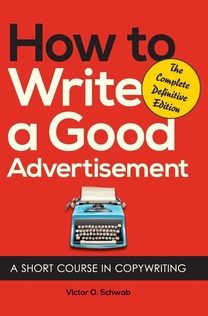
How to Write a Good Advertisement
This book might well have carried the subtitle Or 44 Years in the Copy Department instead of its present one. Even a copywriter, whose breed is not noteworthy for arithmetical prowess, could not escape arriving at the conclusion that the number of years from 1917 to 1961 totals forty-four. And, Heaven help me!, for that seeming aeon of time the major interest of the author has been advertising copy— good, bad, and indifferent. That a large measure of this past experience has been associated with a particularly demanding kind of advertising copy may, as will be explained, be an advantageous circumstance for the reader of this book, regardless of what type of copywriting job confronts him. For the subject of the book is not the writing of mail-order copy. Its sole purpose is to lend a hand to any copywriter (or student of copy-writing) whose ambition is to create advertisements which are more resultful, no matter what the product is or how and where it is sold. As to why the author’s background of experience may represent an advantageous circumstance for such copywriters, I will leave to an infinitely more capable pen than mine—that of no less an authority than Claude G. Hopkins, one of the greatest copywriters of “general” advertising who ever lived: “Mail-order advertising is difficult. But it is educational. It keeps one on his mettle. It fixes one’s viewpoint on cost and result. The advertising-writer learns more from mail-order advertising than from any other.” Therefore, if you are looking for guidance specifically concerned with the writing of mail-order advertising, this is not your book. On the other hand, if in the writing of any type of advertising you want more of your copy to achieve the selling effectiveness imperative for any mail-order man who wants to continue eating heartily, this book may prove helpful to you. At any rate, you are the person for whom it was written. Much of its information will probably recall to your mind the aphorism, “We need not so much to be instructed as to be reminded.” And that’s all to the good. Finally, and appertaining to the passages which are reminiscent in nature, the author has tried to avoid any necessity for later having to admit, like Mark Twain, that “When I was very young I could remember anything, whether it happened or not. But now I am older and I can only remember the latter.” Victor O. Schwab
See all
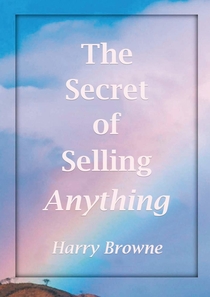
The Secret of Selling Anything
A Different Kind of Selling BookIf you've read other selling books, you're probably tired of the false promises that never quite work out. You're probably tired of being told "you can do it if you just believe you can."You're probably tired of reading about tricks that made a particular sale - tricks that may have been appropriate to a particular situation, but not yours - and even if they were appropriate, how would you have thought of them at the right time?If you've read books on selling before or listened to "sales experts," you're probably tired of being pumped with hot air - told how you must "come alive," be full of enthusiasm, dominate the world around - all the things that don't happen to be a part of your basic nature.Well, this book isn't anything like that. In fact, this book was written to refute many selling clichés that have been accepted without question for years.This book will prove to you that the stereotyped image of the "born salesman" is a mistake. You don't have to remake your personality and become super-enthusiastic, super-aggressive, domineering. Not only are those traits unnecessary, they are actually a hindrance to making sales.
See all
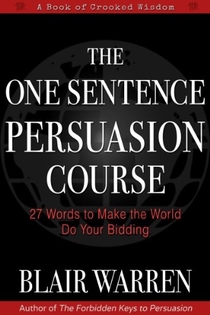
The One Sentence Persuasion Course - 27 Words to Make the World Do Your Bidding eBook: Warren, Blair: Kindle Store
The One Sentence Persuasion Course - 27 Words to Make the World Do Your Bidding - Kindle edition by Warren, Blair. Download it once and read it on your Kindle device, PC, phones or tablets. Use features like bookmarks, note taking and highlighting while reading The One Sentence Persuasion Course - 27 Words to Make the World Do Your Bidding.
See all

Win Your Case
From renowned trial attorney and New York Times bestselling author Gerry Spence: a must own book for every lawyer and business professional seeking to make cutting-edge winning presentations--in court, at work, everywhere, any time.Gerry Spence is perhaps America's most renowned and successful trial lawyer, a man known for his deep convictions and his powerful courtroom presentations when he argues on behalf of ordinary people. Frequently pitted against teams of lawyers thrown against him by major corporate or government interests, he has never lost a criminal case and has not lost a civil jury trial since 1969.In Win Your Case, Spence shares a lifetime of experience teaching you how to win in any arena-the courtroom, the boardroom, the sales call, the salary review, the town council meeting-every venue where a case is to be made against adversaries who oppose the justice you seek. Relying on the successful courtroom methods he has developed over more than half a century, Spence shows both lawyers and laypersons how you can win your cases as he takes you step by step through the elements of a trial-from jury selection, the opening statement, the presentation of witnesses, their cross-examinations, and finally to the closing argument itself. Spence teaches you how to prepare yourselves for these wars. Then he leads you through the new, cutting-edge methods he uses in discovering the story in which you form the evidence into a compelling narrative, discover the point of view of the decision maker, anticipate and answer the counterarguments, and finally conclude the case with a winning final argument. To make a winning presentation, you are taught to prepare the power-person (the jury, the judge, the boss, the customer, the board) to hear your case. You are shown that your emotions, and theirs, are the source of your winning. You learn the power of your own fear, of honesty and caring and, yes, of love. You are instructed on how to role-play through the use of the psychodramatic technique, to both discover and tell the story of the case, and, at last, to pull it all together into the winning final argument.Whether you are presenting your case to a judge, a jury, a boss, a committee, or a customer, Win Your Case is an indispensable guide to success in every walk of life, in and out of the courtroom.
See all
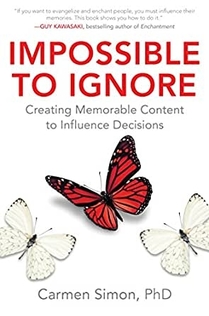
Impossible to Ignore: Creating Memorable Content to Influence Decisions
A groundbreaking approach to creating memorable messages that are easy to process, hard to forget, and impossible to ignore—using the latest in brain science Audiences forget up to 90 percent of what you communicate. But people make decisions and act based on what they remember, so a pragmatic approach for the effective communicator is to be deliberate about the 10 percent that audiences do retain. Otherwise, content recall is random and inconsistent. Many experts have offered techniques on how to improve your own memory, but not how to influence other people’s memory. Drawing on the latest research in neuroscience and cognitive psychology, Impossible to Ignore is a practical step-by-step guide that will show you how to control the 10 percent that your audiences do remember by creating content that attracts attention, sharpens recall, and guides decision-making toward a desired action.
See all

